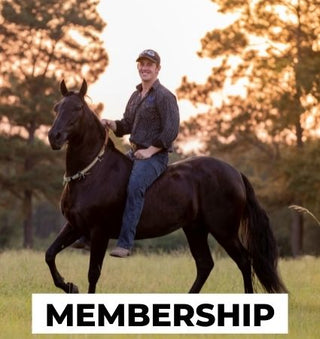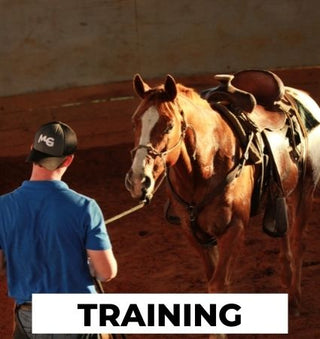Learn the techniques to soften your horse and improve control.
Understanding Resistance in Horses
Why your horse might be bucking or stiff.
Horses often display resistance when they lack proper training in "flexing in motion." This training disconnects the horse's head from its body to improve overall control. Without this, horses can behave unpredictably—like a car with a stuck steering wheel. It’s crucial to develop this connection for safety and performance, especially during activities like obstacle courses or trail riding.
The Basics of Flexing in Motion
Control starts with softness.
The goal is to make your horse as soft and responsive in motion as they are while standing still. If your horse resists, it’s often a sign that their training lacks focus on flexion. By teaching the horse to soften and respond to rein cues, you'll gain control even when the horse's feet are moving.
Step-by-Step Guide for a Resistant Horse
Techniques to overcome resistance.
-
Start with Flexion at a Standstill
Begin by teaching your horse to bring their face toward you with minimal rein pressure. If they resist, focus on softening them at the halt first. -
Introduce Motion Gradually
Ask the horse to walk forward. Keep your hands low—one near your hip and one near your thigh. If the horse feels "sticky" or resistant, focus on one side at a time. -
Focus on One Side First
Instead of switching between sides, work on flexing the horse in one direction. Every time the horse returns their face to the center, gently pull it back to the side until they yield easily. -
Release and Reward
When the horse gives you their face, release the pressure immediately. This release encourages them to seek softness and lower their head.
Advanced Tips for Resistant Horses
Tools and adjustments for better results.
-
Change the Rein Attachment
Move the reins higher on the noseband to increase pressure and gain better control. This creates a more direct cue, helping resistant horses respond faster. -
Adjust Your Pressure
When pulling on one rein, focus on guiding the horse's face rather than simply applying pressure. Soft, systematic movements yield better results. -
Incorporate Movement Exercises
As the horse becomes more responsive, practice trotting or cantering. Each stride is an opportunity to reinforce flexion by gently bringing their face back to one side as needed.
Building Flexibility for Advanced Maneuvers
The foundation for spins, stops, and lead changes.
A soft, responsive horse is key to achieving more advanced movements like sliding stops, spins, or flying lead changes. Without control of their face, these maneuvers are nearly impossible. By systematically addressing resistance and building softness, you'll lay the groundwork for these complex skills.
Patience and Persistence
How to stay consistent without frustration.
Training a resistant horse requires patience. Avoid getting emotional or frustrated. Instead, think of the process as slowly carving a path through resistance—one flex at a time. With persistence, even the most challenging horse will eventually yield and soften.
Conclusion
Transform your horse with consistent training.
By practicing the steps outlined above, you’ll turn resistance into responsiveness, creating a safer, more enjoyable riding experience. Remember, the key is consistency and rewarding softness. Soon, your horse will look to "melt" into your cues, offering the softness needed for a reliable partnership.
Try these techniques today, and enjoy the progress with your horse. See you in the next video!
Get the training and support you need—join the Horse Help Challenge now HERE!









